Why Croatia is Where History and Wonder Collide
June 24, 2021
Croatian travel resources
A melting pot of history
If any country has played a role as a crossroad of history, it’s present-day Croatia. Because of its key location spanning Eastern and Western cultures, this West Virginia-size nation, along with neighbors which formerly comprised Yugoslavia, provided a bridge and melting pot of peoples over many centuries. Among those who came, went, and left their influences were ancient Greeks, Romans, and Venetians.
This rich kaleidoscope of cultures, ethnicities, and religions, along with its storied history, natural beauty, and other attractions, has elevated Croatia into a major magnet for travelers seeking a unique experience. The result: While the country ranks only 127th in the world in size, it’s the 18th most popular tourist destination.
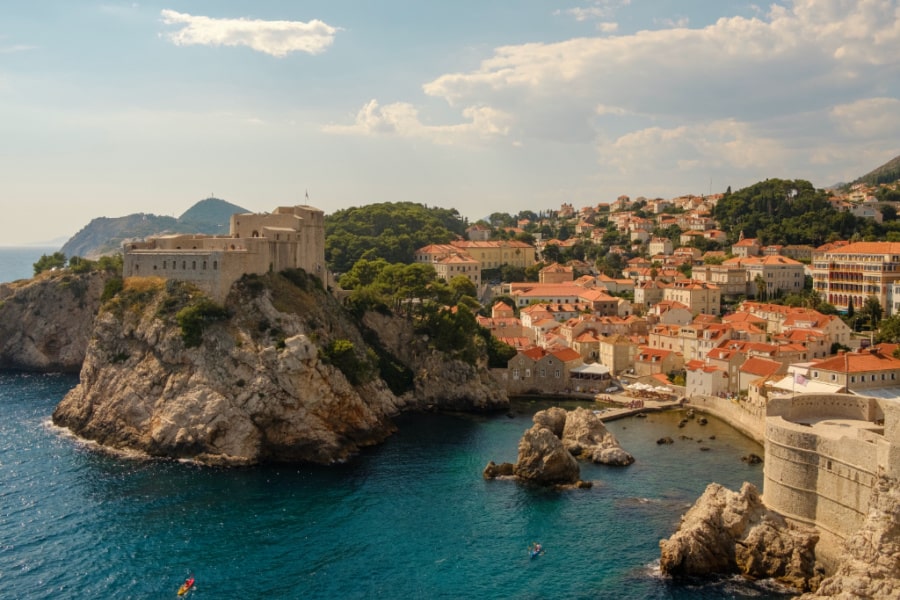
Where history comes alive
Croatia’s cities, towns, and villages serve as living history museums which immerse visitors in centuries past. That’s certainly true of Dubrovnik, the famous medieval walled city that well deserves its accolade of “Pearl of the Adriatic.” As a major city-state and maritime trade center, its reach and power throughout the Mediterranean and Adriatic Seas rivaled that of Venice from the 14th through 18th centuries. The intact fortress walls which surround the old city, the wealth of stunning architecture, historic monuments, and maze of narrow streets transport visitors back to those heady times. No wonder it has been designated as a World Heritage Site by UNESCO.
Dubrovnik suffered heavy damage in the early 1990s when Croatia sought to become a sovereign country following the breakup of Yugoslavia but was opposed and attacked by Bosnia. Since then, the historic core of the city has been restored to its former splendor. The city walls, accentuated by three forts, 16 towers, and other fortifications, are among the best-preserved and most beautiful in Europe. Built over a span of six centuries beginning in the 12th, they create a 1-1/4-mile long defensive ring around the old city, and a “walk on the walls” is a favorite activity for visitors.
Check out the best things to do in Dubrovnik >>
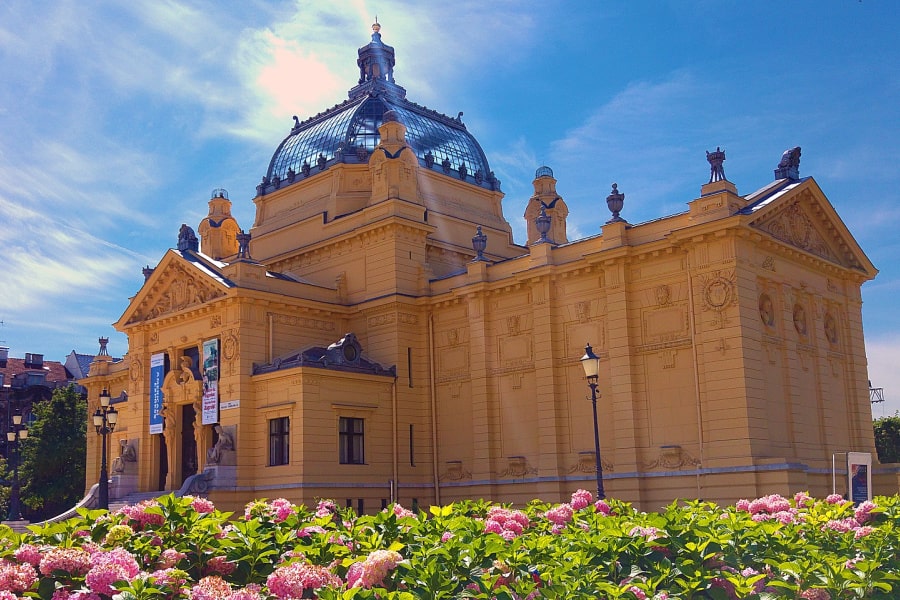
Zagreb, Croatia’s capital, claims architectural treasures that echo the charms of Vienna, Budapest, Prague, and other great European cities. Many historic monuments grace the Lower Town. A more contemporary touch is added by seemingly wall-to-wall cafes and coffee houses that are packed with people throughout days and well into nights.
The Baroque Upper Town provides a backdrop for bustling open-air markets that hum with life and local color. Zagreb's most photographed monuments live as neighbors on St. Mark’s Square. The multi-colored tile roof of St. Mark’s Church displays the medieval coat of arms of Croatia, Dalmatia, and Slavonia on one side, and the emblem of Zagreb on the other. Nearby are the home of the Croatian parliament and the presidential palace.
Other towns throughout Croatia have their own appeals and stories to tell. The defensive walls which encircle the medieval hill hamlet of Hum (pronounced Hoom) are distinctive because houses were built into them. Hum is best known for what it does not have, which is many people. It consists of just two short streets, has been listed in the Guinness Book of World Records as the smallest town in the world, and has a current population, depending upon the source of information, of 17, 18, or “about 20.”
Find out more about Croatia tours focused on history and culture >>
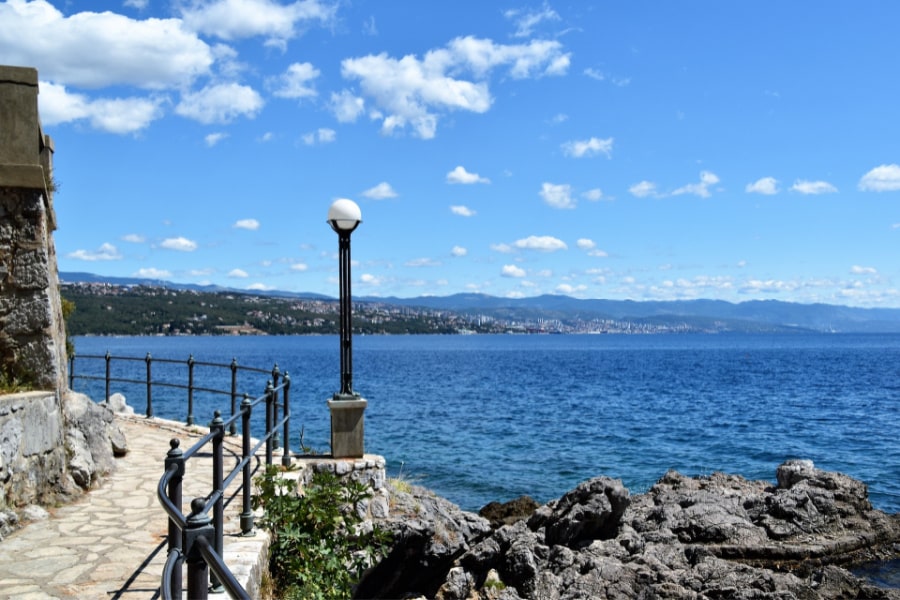
A very different story unfolds in the towns of Lovran and Opatija (oh-pah-tee-uh), adjacent seaside resorts with a long history of tourism. In Roman times, both were popular with patrician families who built impressive villas. Fast forward to the end of the 19th century, when the towns became fashionable vacation destinations for aristocratic families of that time, whose elegant homes still grace the setting.
How well do you know the world?
Play the gameContinues below
A melting pot of history ...continued
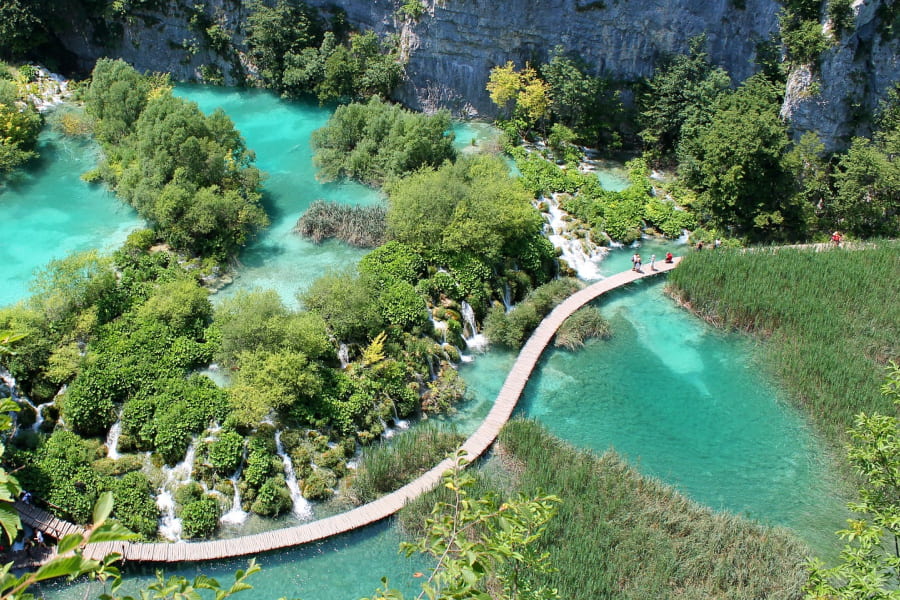
Mother Nature At Her Best
Mother Nature may have been hard-pressed to create breathtaking beauty in such a compact area, but she gave it a good shot. The main attraction is Plitvice Lakes National Park which encompasses a series of 16 lakes linked by waterfalls and rivulets that cascade from one to another. The lakes themselves reflect the colors of their surroundings, from emerald green and turquoise to blue and gray.
Another popular setting is the line of beaches strung out along Croatia’s long coastline on the Adriatic Sea. While most are pebble beaches, there also are inviting sandy stretches. Attesting to their appeal is the fact that 97 of them have Blue Flag status, an international award based upon water quality and other standards.
Explore Hiking and Exploring focused turs to Croatia >>
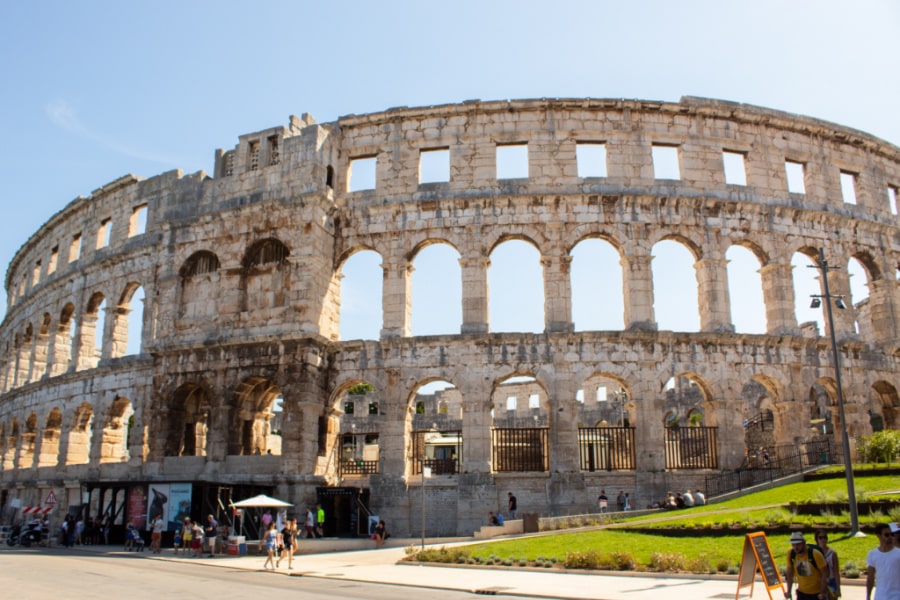
Top Attractions for Memories
Visiting the treasure trove of Roman ruins. Rome conquered the area in the 2nd century BC, ruled there for some 500 years and left behind profuse evidence of their stay. Remnants of Roman structures are grouped along the coastline, dotted throughout the countryside and preserved in cities. In the village of Motovun are gravestones of Romans who lived there in the 1st century AD. The amphitheater in Pula, one of the best-preserved in the world, accommodated 23,000 people when gladiators fought there. Near Zagreb, the remains of a Roman city stand in an archeological park.
Sharing very personal stories at the unique Museum of Broken Relationships in Zagreb. It describes with poignant words and interesting artifacts the sad endings of bonds between married couples, lovers, and parents and children.

A night spent at a farmhouse in Slavonia, Croatia’s “breadbasket” from which much of the country’s crops and livestock come. What now are guest rooms in the typical early 20th-century building formerly were used to store equipment, crops, and other farm-related items.
Savoring the eclectic cuisine of Croatia, which combines Italian, Turkish, and other culinary influences. Whether wolfing down the ubiquitous meat and potatoes, enjoying fresh vegetables and mushrooms, or digging into pasta and pizza, dining becomes a delicious part of the experience.
Accompanying a truffle hunter and his dog on a search in the woods, then sampling the finds served in a variety of ways. The best white truffles in the world are said by many aficionados to come from the Istrian Peninsula, which Croatia shares with Slovenia and Italy, and a small area of northwestern Italy.
Take a look at trips to Croatia all about food and wine >>
The humor which Croatian people employ to poke fun at both themselves and their former Yugoslavian neighbors. Old animosities among ethnic and religious groups that sparked armed conflicts in the past remain, but today they’re largely replaced by verbal attacks that combine jests with jibes.

Continues below
A melting pot of history ...continued
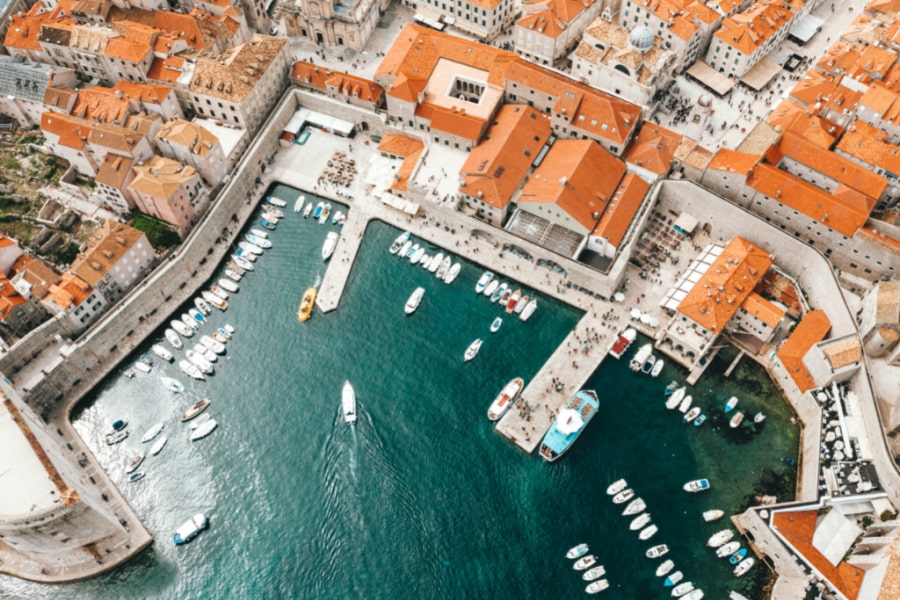
Tour Tips
When planning to visit Croatia, be sure to pack comfortable walking shoes with good treads. They’ll come in handy. For example, a stroll around Dubrovnik’s city walls is rewarded with stunning views over the city with its characteristic red-tiled roofs and the Adriatic Sea beyond. However, it requires climbing some steep steps.
The same often is true when climbing to visit Roman ruins, medieval castles, and other sites, many of which were built on top of high hills for defensive purposes.
Other challenges are encountered in a number of cities and towns. That includes Zagreb, where a long, steep flight of stairs connects the Lower Town to its Upper Town. However, a funicular, said to be the shortest in the world used for public transportation, can whisk you there in 55 effort-free seconds.
Because of the hilly terrain in some places, rides can induce motion sickness. If you’re prone to that malady, carry along pills to combat the sensation.,
When joining an Overseas Adventure Travel tour group, some degree of flexibility is helpful. The company takes its “Learning and Discovering” mantra seriously. Guides often include unscheduled stops, visits, and experiences in the itinerary, taking advantage of opportunities that arise and doing their best to fill requests by group members for specific things to see and do.
Connect & Share
"Why Croatia is Where History and Wonder Collide "

